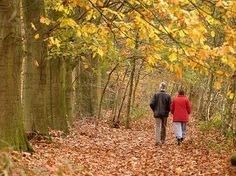Natuurgebied Beestenveld | De Rips
Contact
Beestenveld
Until 1864, the Beestenveld covered a much larger area than today and consisted mostly of dry and (very) wet heathland. It stretched from Bakel all the way along the border with Gemert to the border with Oploo.
After the partition of the Bakelse Peel in 1864, the Beestenveld became much smaller and the former municipality of Bakel c.a. itself acquired the area of 362 ha.
In 1883 the gentlemen Van Waterschoot, van der Gracht and van Ogtrop bought this heath and in 1893 the Heidemaatschappij obtained the assignment to start the reclamation and afforestation here.
From the creation of the village of De Rips in 1921 until the middle of the last century, the production wood was delivered to the then owner the Mine Laura in Eijgelshoven. The wood served as standing timber for the mining galleries for coal mining.
Since …
Beestenveld
Until 1864, the Beestenveld covered a much larger area than today and consisted mostly of dry and (very) wet heathland. It stretched from Bakel all the way along the border with Gemert to the border with Oploo.
After the partition of the Bakelse Peel in 1864, the Beestenveld became much smaller and the former municipality of Bakel c.a. itself acquired the area of 362 ha.
In 1883 the gentlemen Van Waterschoot, van der Gracht and van Ogtrop bought this heath and in 1893 the Heidemaatschappij obtained the assignment to start the reclamation and afforestation here.
From the creation of the village of De Rips in 1921 until the middle of the last century, the production wood was delivered to the then owner the Mine Laura in Eijgelshoven. The wood served as standing timber for the mining galleries for coal mining.
Since 1979, the forests have been owned by the State Forestry Administration and more modern forest management has been applied, resulting in a greater diversity of Flora and Fauna.
Through these woods lies the Koordenkanaal and a part of it is currently part of the (new) Peelse Loop.
Source: Hiking route De Rips B.ploegmakers

